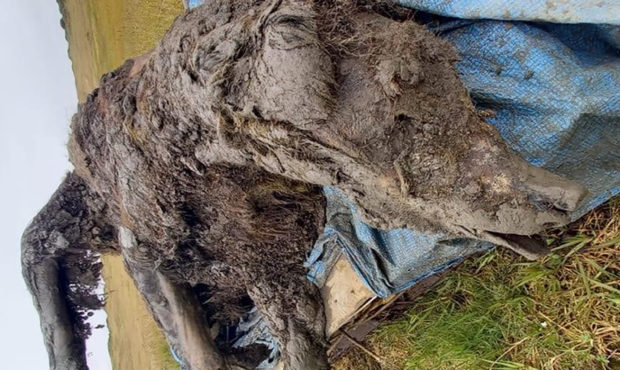 Have you heard of or watched the “Ice Age” movie collection? If so, characters like Manny the Mammoth, Sid the Giant Ground Sloth, and Diego the Smilodon probably sound familiar.
Have you heard of or watched the “Ice Age” movie collection? If so, characters like Manny the Mammoth, Sid the Giant Ground Sloth, and Diego the Smilodon probably sound familiar.
Now, what if we told you a cave bear that lived during the time period of these characters was found perfectly preserved in melted permafrost (frozen soil) in Siberia, Russia?
Reindeer herders in Bolshoy Lyakhovsky, an island in Siberia, recently discovered a mummified cave bear. They were pleasantly surprised at how intact its internal organs, muscles, and tissues were! Not far from this discovery, a well-preserved cave bear cub was also found in the Sakha Republic, also known as Yakutia, which is in mainland Siberia.
Though the melting permafrost within these regions does not always foretell good news, this is certainly an astronomical finding. These cave bear species are now extinct, and previous discoveries of them have only uncovered the bones and skulls of these mammals.
Comparison with Modern-Day Bears
 Unlike our modern-day bears, which are omnivorous, these ancient cave bears were mostly herbivores with a diet that consisted of vegetation.
Unlike our modern-day bears, which are omnivorous, these ancient cave bears were mostly herbivores with a diet that consisted of vegetation.
Massive in size, they stood at 11.5 feet (3.5 meters) and weighed up to 3,300 lbs. That’s slightly taller than present-day polar bears that measure a whopping 10 feet (3 meters) when standing on hind legs.
This cave bear species, however, lived in Asia and Europe and most likely went extinct around 22,000 to 35,600 years ago, during the most recent Ice Age, the Pleistocene Epoch. During this time, summer temperatures in the Northern Hemisphere did not surpass the freezing point (0 ℃). As a result, snow from the previous winter did not melt, and the accumulation of fresh snow over thousands of years led to the formation of thick ice sheets.
Melting Permafrost
 Permafrost refers to soil that has been frozen for long periods of time and often contains ice mixed with organic matter and other sediments. Due to rising global temperatures, these frozen soils are beginning to melt at a faster pace than predicted.
Permafrost refers to soil that has been frozen for long periods of time and often contains ice mixed with organic matter and other sediments. Due to rising global temperatures, these frozen soils are beginning to melt at a faster pace than predicted.
On the one hand, melting permafrost gives scientists an opportunity to uncover extinct mammals such as the cave bear and cave bear cub.
However, these permafrosts are also large carbon sources because of all the decaying animals and plants in the soil. As a result, when the soil begins to thaw and organic matter starts to decompose, high quantities of carbon, methane, and other greenhouse gases will be released into the atmosphere, further speeding up global climate change.
Nevertheless, the discovery of a well-preserved and intact cave bear is extremely significant as it allows scientists to delve further into the history of the Ice Age.
Furthermore, from analyzing the different skeletal structures of the bear and its organs, scientists can learn more about its diet, the environment it lived in, and most importantly, the evolutionary connections to other species.
Sources: LiveScience, ARS Technica, Smithsonian, Nature, Britannica







